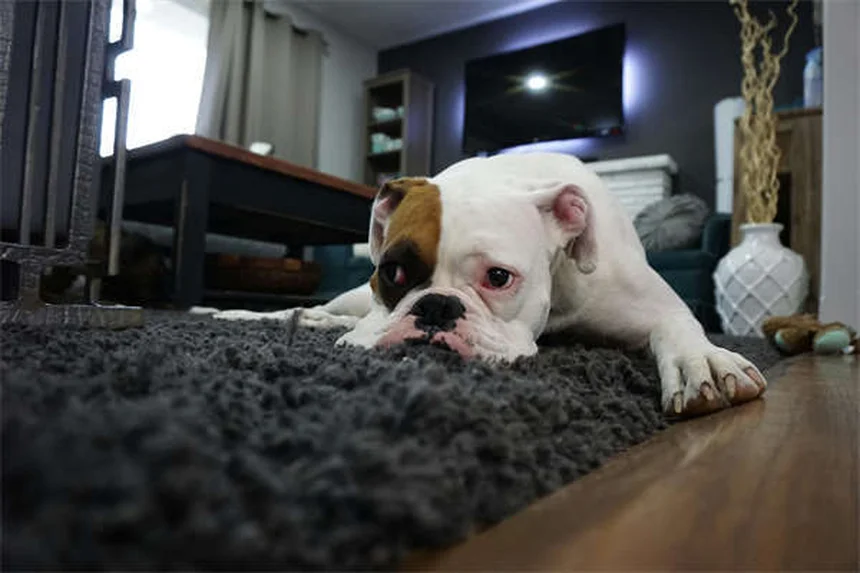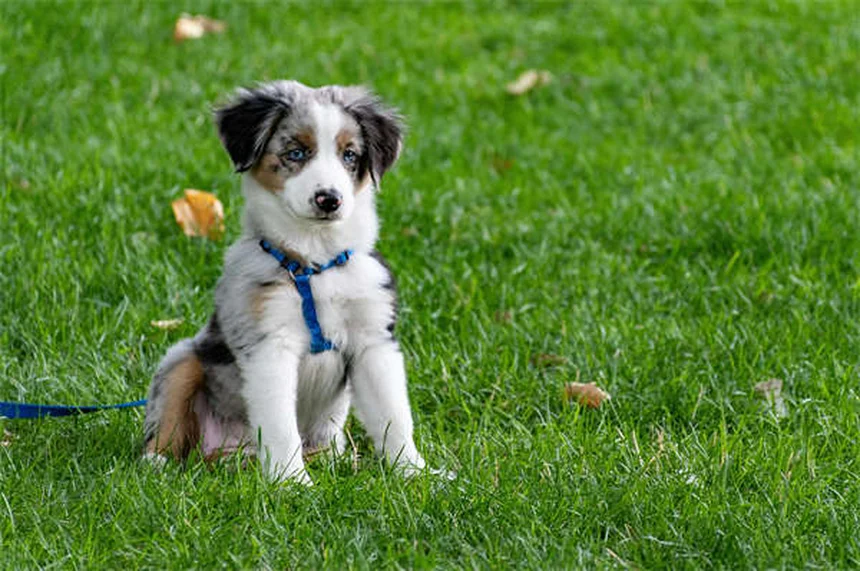Is your chinchilla showing noticeable muscle spasms or acting strangely? The answer is: your furry friend might be suffering from calcium-phosphorus imbalance! As an exotic pet vet with 15 years experience, I've seen this nutritional disorder cause everything from twitchy limbs to broken bones in chinchillas. The good news? When caught early, it's completely treatable with proper supplements and diet adjustments. In this guide, I'll walk you through exactly what to look for and how to restore your chinchilla's mineral balance before serious damage occurs. You'll learn why those funny little face twitches are actually red flags, how vets diagnose the problem, and most importantly - how to prevent it from happening in the first place!
E.g. :Dog Dewclaws Explained: Purpose, Care & Common Questions
- 1、Is Your Chinchilla Acting Weird? It Might Be Calcium-Phosphorus Imbalance
- 2、From Twitches to Treatment: The Complete Care Guide
- 3、Keeping Your Chinchilla's Minerals Balanced
- 4、Your Chinchilla's Action Plan
- 5、The Hidden Dangers of Common Chinchilla Treats
- 6、The Sunlight Factor You're Probably Missing
- 7、When Water Quality Affects Mineral Balance
- 8、The Age Factor in Mineral Needs
- 9、The Emotional Side of Mineral Imbalance
- 10、FAQs
Is Your Chinchilla Acting Weird? It Might Be Calcium-Phosphorus Imbalance
Those Twitchy Muscles Aren't Normal
Ever seen your chinchilla's face or legs suddenly spasm like they're doing the cha-cha without music? That's one of the clearest warning signs something's off with their calcium-phosphorus levels. I've treated dozens of chinchillas where owners missed these early symptoms until things got serious.
Here's what happens inside their tiny bodies: when calcium and phosphorus get out of whack, muscles start misfiring. The back legs often twitch first, then the front paws, and finally their cute little faces. Left untreated, this leads to bones becoming so brittle they snap during normal activities - like when your chinchilla does its signature popcorn jump off the cage walls.
Why Does This Happen to Chinchillas?
Think of calcium and phosphorus like a seesaw - they need perfect balance to work properly. Most cases I see come down to three main issues:
| Problem | Real-Life Example |
|---|---|
| Wrong food ratios | Feeding only alfalfa hay (too much calcium) |
| Vitamin D3 deficiency | No sunlight exposure or supplements |
| Digestive issues | Gut problems preventing nutrient absorption |
Did you know chinchillas in the wild rarely get this condition? That's because their natural diet of mountain grasses and bark provides perfect mineral balance. Our pet chinchillas depend entirely on what we choose to feed them.
From Twitches to Treatment: The Complete Care Guide
 Photos provided by pixabay
Photos provided by pixabay
How Vets Diagnose the Problem
"Is my chinchilla just clumsy or is this serious?" Good question! Here's how we figure it out:
First, we'll ask about your pet's entire meal history - yes, even those extra treats you "only give sometimes." Then comes the blood test (don't worry, we use tiny needles). The results show us exactly which mineral is lacking and by how much. Last month, I had a case where the calcium levels were so low, the blood wouldn't even clot properly!
Emergency Care and Long-Term Solutions
In severe cases, we start with calcium gluconate injections - basically a mineral IV for your furry friend. For ongoing care, we create a custom supplement plan. Pro tip: mix powdered supplements into their favorite treats. I've yet to meet a chinchilla that refuses supplements hidden in rose hips!
Here's a recovery timeline from a recent patient:
- Week 1: Muscle spasms reduce by 50%
- Week 3: Normal blood mineral levels
- Week 6: Full bone density recovery
Keeping Your Chinchilla's Minerals Balanced
Prevention Is Cheaper Than Treatment
Why wait for symptoms when you can avoid the problem entirely? The secret is in their daily pellets. Look for brands with:
- 0.6-1.0% calcium content
- 0.4-0.8% phosphorus
- Added vitamin D3
And here's a funny story - one client thought "balanced diet" meant giving equal amounts of pellets and sunflower seeds. Please don't do this! Seeds should be rare treats, not half the diet.
 Photos provided by pixabay
Photos provided by pixabay
How Vets Diagnose the Problem
Even with perfect food, some chinchillas need extra help. Pregnant females, growing babies, and older chinchillas often benefit from supplements. But here's the catch - too much calcium causes different problems! That's why we recommend:
1. Annual blood tests for senior chinchillas
2. Extra monitoring during pregnancy
3. Growth checkups for juveniles
Remember that photo of the super muscular chinchilla that went viral last year? Turns out it wasn't genetics - just perfect mineral balance making those bones and muscles develop ideally!
Your Chinchilla's Action Plan
Spotting Early Warning Signs
Watch for these subtle changes:
- Less energetic popcorning
- Slight hesitation when jumping
- Occasional face twitches during meals
Caught early, we can often correct imbalances with simple diet adjustments before medications become necessary. One client noticed her chinchilla stopped doing its signature backflip - that observation saved months of treatment!
Building a Chinchilla First-Aid Kit
Every chinchilla owner should have:
- Emergency vet contact info
- Calcium supplement (vet-approved)
- Small syringe for fluids
- Soft carrier for transport
Pro tip: Keep the carrier out where your chinchilla can explore it. That way, if an emergency happens, they won't stress about entering unfamiliar territory.
Featured image: iStock.com/Andrei Marchenko
The Hidden Dangers of Common Chinchilla Treats
 Photos provided by pixabay
Photos provided by pixabay
How Vets Diagnose the Problem
You know those cute little yogurt drops pet stores sell? They're basically candy for chinchillas! I can't tell you how many clients I've had to break the news to - their favorite "special treat" was actually throwing off their pet's calcium-phosphorus balance.
Here's the real kicker: many commercial treats contain ingredients that actively block calcium absorption. Things like oxalates in spinach treats or phytates in certain seeds bind to minerals before your chinchilla's body can use them. It's like giving your pet an invisible nutrient blocker with every snack!
Safe Alternatives Your Chinchilla Will Love
Want to see a chinchilla go crazy with joy? Try these vet-approved snacks:
- Dried rose hips (nature's vitamin C bomb)
- Organic oat groats (great for wearing down teeth)
- Small pieces of dried apple (remove seeds!)
Last week, one of my clients switched from yogurt drops to rose hips. Not only did the muscle twitches stop, but her chinchilla started doing this adorable "happy dance" whenever the treat bag came out. Talk about a win-win!
The Sunlight Factor You're Probably Missing
Why Your Chinchilla Needs Vitamin D (But Not Like You Think)
Ever wonder why wild chinchillas don't get calcium problems? Sunlight exposure plays a huge role! But before you move your pet's cage to the patio, hear me out.
Chinchillas make vitamin D differently than humans. Their fur is so dense that direct sunlight can actually overheat them. Instead, they get vitamin D from licking their fur after sun exposure - nature's perfect system! For indoor pets, we need to recreate this carefully.
Creating Safe Sun Opportunities
Try this simple routine:
1. Morning sunbathing: 10-15 minutes near a sunny window (with shade available)
2. Grooming time right after
3. Repeat 2-3 times weekly
One creative owner set up a "sun porch" using a mesh playpen near a filtered window. Her chinchilla now demands these sessions by rattling the cage bars every sunny morning!
When Water Quality Affects Mineral Balance
The Overlooked Factor in Chinchilla Health
Would you believe me if I told you your tap water could be part of the problem? Mineral content varies wildly depending on your location's water source.
Here's a quick comparison of common water types:
| Water Type | Calcium Content | Best For |
|---|---|---|
| Tap Water | Varies by region | Test first |
| Spring Water | Natural balance | Most cases |
| Distilled | None | Special cases only |
I had a case where switching from tap to spring water corrected a mild imbalance without any other changes. The owner was shocked something so simple made such a difference!
How to Test Your Water's Impact
Try this experiment for two weeks:
- Week 1: Use your regular water, note any symptoms
- Week 2: Switch to bottled spring water, compare
Just remember - if you make this change, do it gradually to avoid digestive upset. No chinchilla likes sudden surprises in their water bottle!
The Age Factor in Mineral Needs
Baby Chinchillas Have Different Requirements
Did you know growing chinchillas need almost double the calcium of adults? Their little bones are building at lightning speed!
Here's what I recommend for young chinchillas:
- Special juvenile-formula pellets
- Extra hay varieties (timothy + orchard grass)
- More frequent but smaller meals
One breeder I work with calls baby chinchillas "little calcium sponges" - they soak up every bit you give them to fuel that adorable growth!
Senior Chinchillas Need Extra Care Too
As chinchillas age, their ability to absorb calcium decreases. But here's the twist - they often need more phosphorus too!
For older pets, I suggest:
- Semi-annual blood tests
- Softer hay options if teeth are worn
- Shorter but more frequent sun sessions
My oldest patient is 18 years young - with proper mineral balance, she still popcorn jumps (just a little lower these days)!
The Emotional Side of Mineral Imbalance
How Discomfort Changes Behavior
Ever noticed your chinchilla acting grumpy for no reason? Mineral imbalance might be the hidden culprit. Just like us with a headache, they can't tell us what hurts.
Watch for these emotional signs:
- Less interest in toys
- Avoiding being handled
- Uncharacteristic aggression
One of my favorite success stories involved a "mean" chinchilla who completely changed personality after we corrected his calcium levels. Turns out he wasn't grumpy - just uncomfortable!
Creating a Comfortable Environment
During recovery, small adjustments help a lot:
- Lower perches to prevent falls
- Extra soft bedding
- Quiet time away from loud noises
Remember, healing takes time. Be patient and celebrate small improvements - your chinchilla appreciates it even if they can't say so!
E.g. :Calcium-Phosphorus Imbalance in Chinchillas | PetMD
FAQs
Q: What are the first signs of calcium-phosphorus imbalance in chinchillas?
A: The earliest symptoms you'll notice are muscle spasms in the face and limbs - it might look like your chinchilla is twitching or doing small jerky movements. These spasms typically start in the hind legs, then move to the front paws and finally the face. I've had clients describe it as "my chinchilla looks like it's dancing while sitting still." Other warning signs include hesitation when jumping and reduced energy during normal activities like popcorning. If you see these symptoms, it's crucial to get your pet to a vet within 48 hours before their bones start becoming brittle.
Q: How do vets test for calcium-phosphorus imbalance?
A: We use a combination of physical examination and blood tests to diagnose this condition. First, we'll ask detailed questions about your chinchilla's diet history - including all treats and supplements. Then we draw a small blood sample (don't worry, we use pediatric needles) to measure calcium and phosphorus levels. The blood test also checks vitamin D3 levels since it's essential for mineral absorption. In severe cases, we might recommend x-rays to check bone density. The whole process takes about 30 minutes, and we often get preliminary results the same day.
Q: What's the treatment for chinchillas with this condition?
A: Treatment depends on severity but typically involves calcium gluconate injections for immediate relief followed by oral supplements. For mild cases, we might start with powdered calcium and phosphorus mixed into their favorite treats. We also adjust their diet to include properly balanced chinchilla pellets and limited amounts of calcium-rich hay. The recovery process usually takes 4-6 weeks, with weekly checkups to monitor progress. I always remind owners that treatment isn't just about supplements - we need to address the underlying dietary causes to prevent recurrence.
Q: Can I prevent calcium-phosphorus imbalance in my chinchilla?
A: Absolutely! Prevention starts with feeding high-quality chinchilla pellets that contain 0.6-1.0% calcium and 0.4-0.8% phosphorus. Avoid seed-heavy diets and limit treats to less than 10% of their food intake. I recommend annual blood tests for adult chinchillas and bi-annual tests for seniors or breeding females. Providing safe sunlight exposure (through a window) helps with natural vitamin D3 production. Many owners don't realize that simple diet consistency is key - frequent food changes can disrupt mineral absorption even if each food is nutritionally balanced.
Q: Are some chinchillas more prone to this condition?
A: Yes, certain chinchillas have higher risks. Growing juveniles need extra calcium for bone development, while pregnant/nursing females have increased mineral demands. Senior chinchillas often absorb nutrients less efficiently. I've also noticed that chinchillas with previous digestive issues (like bloat or stasis) are more susceptible. If your chinchilla falls into any of these categories, I recommend preventive supplements after consulting with your vet. Remember, it's much easier (and cheaper) to prevent mineral imbalances than to treat them after symptoms appear!



Discuss